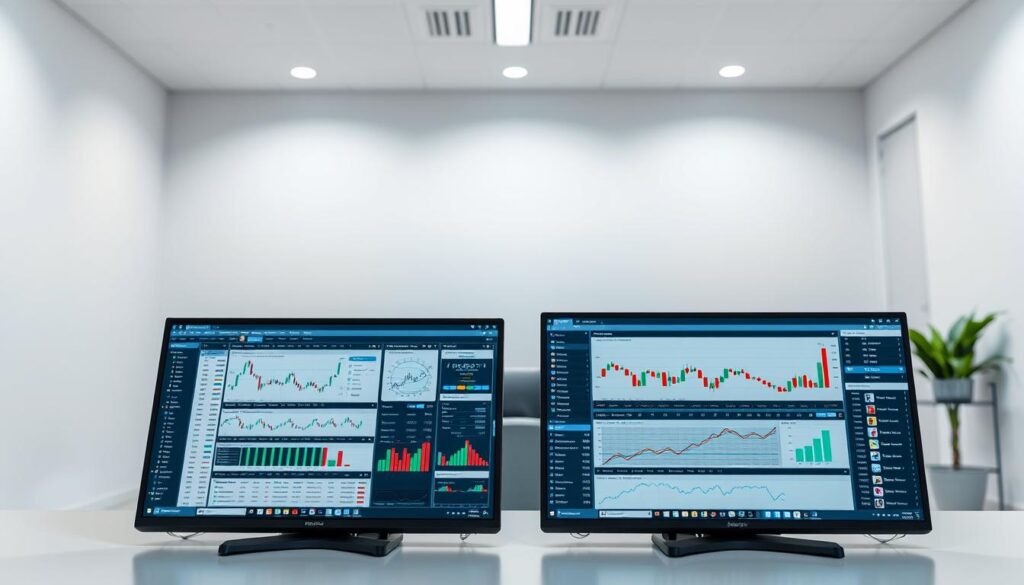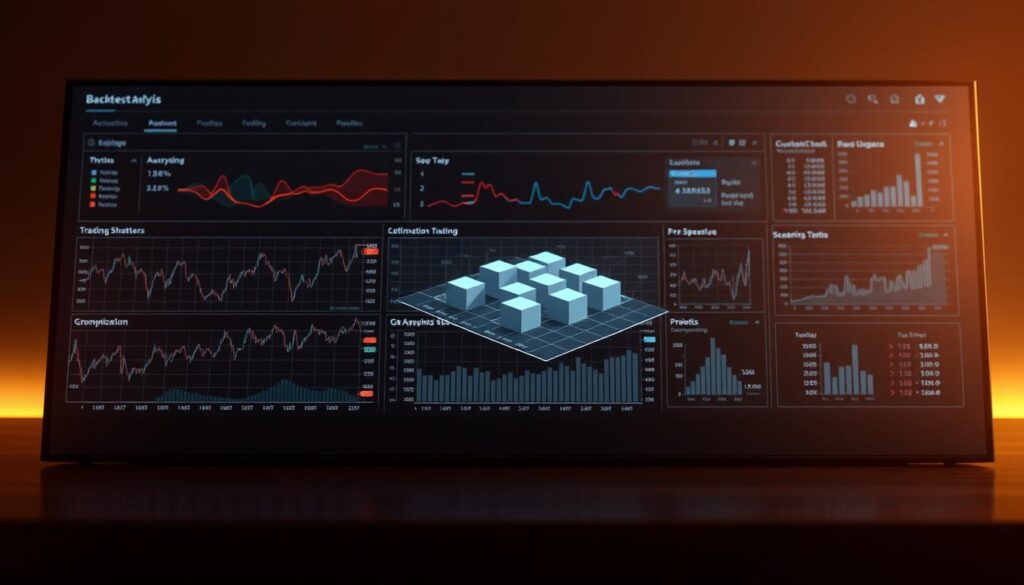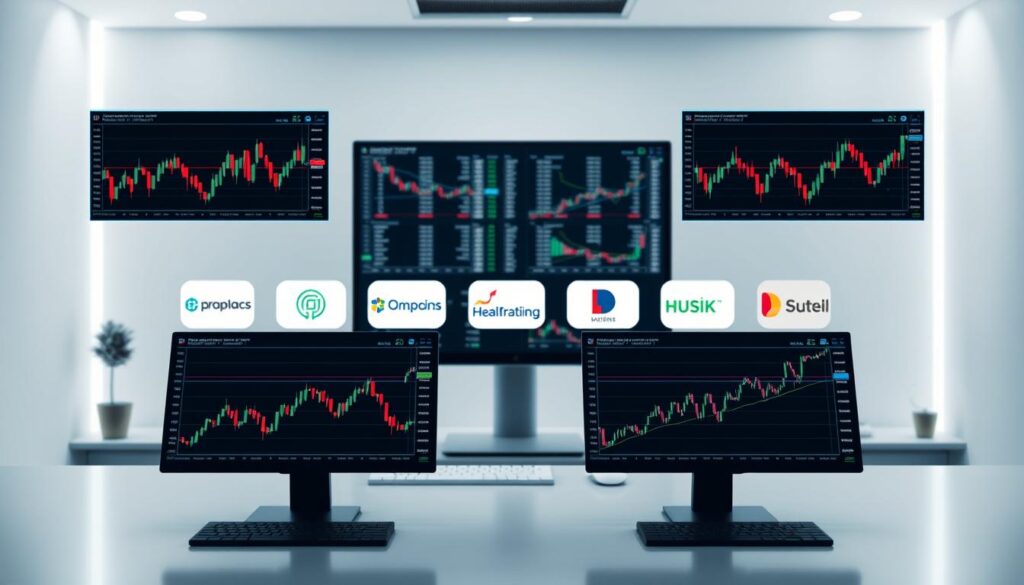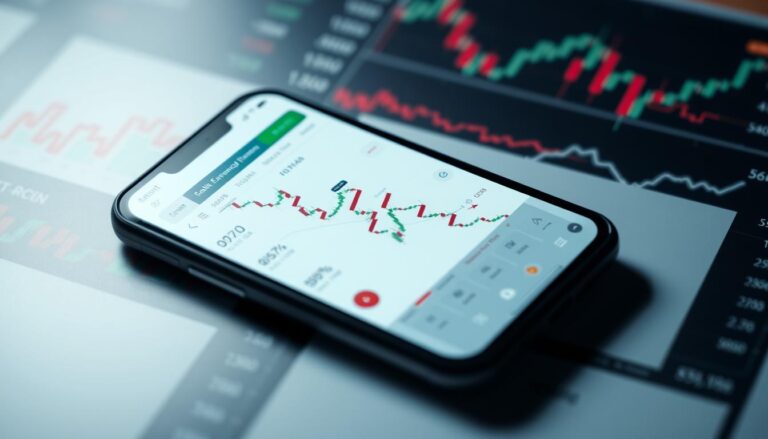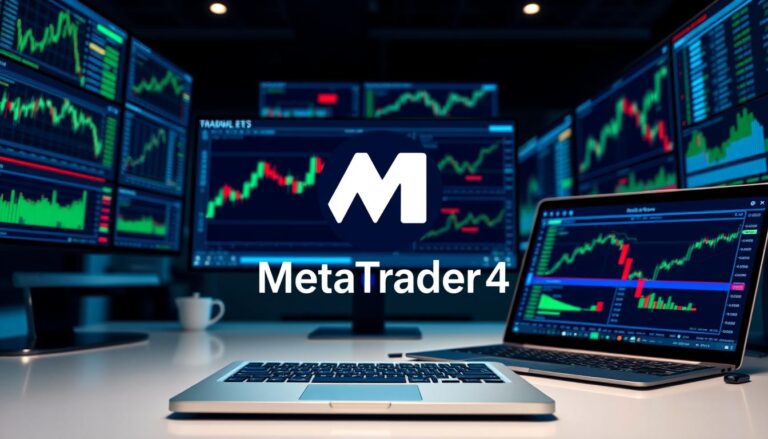MT4 vs MT5, which platform offers better backtesting capabilities
Choosing the right trading platform can make or break a trader’s success. For over a decade, the MetaTrader ecosystem has dominated forex markets, with two major versions sparking endless debates. The older system, released in 2005, remains widely used despite its limitations. Its successor, launched five years later, introduced multi-asset flexibility and advanced testing tools.
Backtesting sits at the heart of effective strategy development. Traders rely on this process to simulate how their approaches would perform under real market conditions. While both platforms offer these features, their technical frameworks differ significantly. The newer system uses multi-threaded processing to accelerate strategy validation, while the older version focuses on simplicity for currency markets.
This analysis explores how each platform handles backtesting. It examines processing speed, historical data accuracy, and compatibility with complex algorithms. For traders, the choice often boils down to balancing familiarity with innovation. Does sticking to a proven interface outweigh accessing cutting-edge tools? The answer depends on individual goals and asset preferences.
Understanding the Evolution of MetaTrader Platforms
The development of trading platforms has transformed how investors approach financial markets. Over two decades, MetaTrader solutions have evolved to meet changing trader demands while maintaining core functionalities.
Introduction to MetaTrader 4
Released in 2005, the older system became the backbone of forex trading. Its simplicity allowed quick strategy implementation through drag-and-drop tools. The platform’s MQL4 language enabled automated trading scripts, creating a thriving ecosystem of custom indicators.
Despite its strengths, the system focused solely on currency markets. Limited asset diversity became apparent as traders sought access to stocks and commodities. This specialization kept it popular among forex purists but restricted broader applications.
Introduction to MetaTrader 5
The 2010 upgrade addressed these limitations through multi-asset support. Designed for modern financial markets, it handles stocks, indices, and cryptocurrencies alongside forex. Enhanced processing power allows faster order execution – crucial for complex backtesting scenarios.
New charting tools and economic calendar integration reflect its focus on comprehensive trading solutions. While retaining familiar features, the upgraded platform introduced advanced risk management modules. These improvements cater to traders needing versatility across asset classes.
Comparing Backtesting Features and Strategy Testing Tools
Effective strategy validation separates successful traders from those relying on guesswork. Modern platforms transform historical data analysis into precise decision-making engines. The evolution of testing tools now allows simultaneous evaluation of multiple market variables.
Overview of Backtesting Capabilities
Robust strategy testers handle complex algorithms through layered technical analysis. Legacy systems process data sequentially, creating bottlenecks for multi-asset evaluations. Newer architectures distribute workloads across computing resources, slashing validation times.
Advanced platforms integrate real spread dynamics and slippage simulations. These features improve accuracy when testing high-frequency trading strategies. Traders gain clearer insights into potential profit margins and risk exposure.
Performance and Efficiency in Testing
Multi-core processing revolutionizes optimization for intricate trading strategies. Where older frameworks required days, modern systems complete analyses in hours. This efficiency lets traders test thousands of parameter combinations without hardware strain.
Enhanced tools automatically adjust indicators like moving averages or RSI thresholds. Real-time visualization helps spot flaws in entry/exit logic. Faster iterations mean quicker refinements to algorithmic approaches.
Exploring Advanced Backtesting Capabilities in MT5
Advanced backtesting tools have become indispensable for traders seeking precision in strategy development. The latest platform innovations transform historical analysis into a dynamic testing ground for high-stakes decisions. By harnessing cutting-edge technology, these systems empower users to simulate market conditions with unprecedented accuracy.
Multi-Threaded Strategy Tester
MT5 offers a revolutionary approach to strategy validation through parallel processing. Its multi-core architecture divides complex calculations across available CPU resources. This design slashes testing times for intricate automated trading systems, turning marathon sessions into quick sprints.
Traders can now evaluate expert advisors across decades of market data in hours rather than days. The 64-bit framework handles memory-intensive tasks effortlessly, supporting sophisticated portfolio simulations. These improvements make stress-testing strategies against volatile markets practical.
Optimizing Complex Trading Scenarios
The platform excels at managing multi-variable strategy optimization. Instead of testing parameters sequentially, MT5 offers simultaneous evaluation of thousands of combinations. Genetic algorithms identify promising configurations, reducing guesswork in refining entry/exit rules.
This capability proves vital for trading systems using multiple indicators or asset correlations. Users gain insights into how strategies perform during economic crises or bull markets. Such depth helps build robust automated trading solutions ready for real-world execution.
Key Differences in Charting and Technical Analysis Tools
Charting precision separates skilled traders from market gamblers. Modern platforms now provide sophisticated technical indicators and drawing tools that transform raw data into actionable insights. These features prove critical when identifying trends or predicting price movements.
Graphical Objects and Timeframes
The newer platform outshines its predecessor with 44 graphical elements versus 31. Traders gain specialized tools for Fibonacci retracements, Elliott Wave patterns, and geometric channel analysis. These enhancements enable precise visualizations of support/resistance levels.
Timeframe flexibility reaches new heights with 21 granular intervals. Micro-periods like 2-minute charts help trading strategies capture fleeting opportunities. This range supports scalping systems and multi-layered technical analysis.
Custom Indicators and Analytical Tools
Thirty-eight built-in technical indicators offer deeper market insights than older systems. Advanced oscillators and volume-based metrics help validate complex strategies. Custom scripts integrate seamlessly, allowing traders to build proprietary analysis tools.
These improvements directly enhance backtesting accuracy. More indicators and timeframes create realistic simulations of market behavior. Traders can stress-test strategies across different volatility range scenarios before live execution.
Impact on Trading Strategies and Risk Management
Modern trading platforms reshape how investors balance opportunity and exposure. Built-in tools now automate critical aspects of strategy refinement and risk management, letting traders focus on market analysis rather than manual calculations.
Enhanced Algorithmic Trading Support
Advanced platforms now handle complex trading strategies through automated adjustments. Systems can dynamically modify stop-loss levels based on volatility or scale positions during news events. This flexibility proves vital when managing multiple currency pairs in fast-moving forex markets.
Portfolio-level safeguards automatically limit exposure across assets. Traders implementing arbitrage techniques benefit from dual hedging and netting capabilities. These features enable precise control over correlated positions without manual intervention.
Integration of Economic Calendar and Alerts
The embedded economic calendar transforms fundamental analysis. Real-time updates on interest rate decisions or employment data appear directly within charts. This integration helps traders anticipate market reactions to key announcements during backtesting and live execution.
Custom alerts notify users when high-impact events approach. Historical data comparisons show how similar announcements affected price action. Traders can then adjust strategies to account for recurring risk patterns around earnings seasons or policy changes.
mt4 vs mt5: Feature Comparison Summary
Trading platforms’ capabilities directly influence strategic outcomes. While interface familiarity matters, execution precision and feature depth determine long-term success. This comparison highlights critical differences in order management and accessibility across devices.
Order Flexibility and Execution Control
MetaTrader 5 delivers superior order management with six pending order types versus four in MetaTrader 4. The newer platform introduces buy stop limit and sell stop limit options, enabling precise entry points during volatile markets. These advanced order types allow traders to test complex strategies that mirror real-world scenarios.
Execution policies further separate the platforms. MetaTrader 5 supports three fill methods compared to MetaTrader 4’s single option. Traders gain flexibility through Immediate or Cancel and Return policies – essential for high-frequency strategies requiring split-second decisions.
Cross-Device Functionality
Both platforms maintain near-identical interfaces across desktop and mobile apps. However, MetaTrader 5 extends its advanced features to smartphones and tablets. Mobile users access the same six pending orders and multi-asset charts available on desktop.
The consistent design philosophy eases transitions between platforms. While MetaTrader 4 remains simpler for forex-focused users, MetaTrader 5’s expanded toolset doesn’t compromise usability. Traders appreciate identical layouts across devices, ensuring strategy continuity during market shifts.
For algorithmic developers and multi-asset traders, MetaTrader 5’s enhanced infrastructure proves decisive. Its execution systems and order diversity support sophisticated backtesting that older platforms can’t match. The choice ultimately hinges on whether users prioritize currency specialization or future-proof versatility.
Role of Broker Support and Market Diversity
Successful trading strategies require more than just technical tools – they demand robust broker support and access to varied markets. While platforms provide the framework, broker partnerships determine which assets traders can actually test and trade.
Access to Diverse Tradeable Instruments
Modern brokers using advanced platforms offer thousands of instruments across markets. Currency pairs remain central, but many now include stocks, futures, and crypto derivatives. This diversity lets traders backtest strategies across asset classes simultaneously.
Platform architecture influences available options. Multi-asset systems handle complex correlations between commodities and indices better than forex-focused solutions. Savvy investors choose brokers offering both niche and mainstream instruments for comprehensive testing.
Demo Trading and Account Flexibility
Quality support shines through virtual trading environments. Demo accounts mirror live market conditions, letting users validate strategies risk-free. Top-tier brokers provide unlimited virtual funds and historical data spanning decades.
Account types matter too. Micro accounts allow testing small-scale strategies, while professional accounts simulate institutional trading. This flexibility helps traders find their ideal balance between risk and reward before committing real capital.

